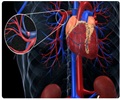More than 1 percent of those who undergo a non cardiac surgery die within a month when their troponin T levels are 5 ng/L.

‘Elevated levels of high-sensitivity troponin - protein that are released when the heart muscle has been damaged increased the mortality rate after surgery.’





P.J. Devereaux, M.D., Ph.D., of McMaster University, Hamilton, Ontario, Canada, and colleagues conducted a study that included patients 45 years or older who underwent inpatient noncardiac surgery and had postoperative hsTnT measurements six to 12 hours after surgery and daily for three days. The patients were recruited at 23 centers in 13 countries.Among 21,842 participants, the average age was 63 years and 49 percent were female. Death within 30 days after surgery occurred in 266 patients.
Analysis indicated that compared with the reference group (peak hsTnT <5 ng/L), peak postoperative hsTnT levels of 20 to less than 65 ng/L had 30-day mortality rates of 3 percent; 65 to less than 1,000 ng/L, a mortality rate of 9.1 percent; and patients with peak postoperative hsTnT levels of 1,000 ng/L or higher had 30-day mortality rates of 29.6 percent.
An absolute hsTnT change of 5 ng/L or higher was associated with an increased risk of 30-day mortality. An elevated postoperative hsTnT without an ischemic feature (e.g., ischemic symptom or electrocardiography finding) was associated with 30-day mortality.
Source-Eurekalert










